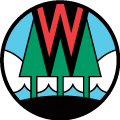Residents
- Webpage
Boat, Gear and Equipment Decontamination and Disinfection Manual Code 9183.1
The general public is required to follow the decontamination steps identified in s. NR 40.02(44) and NR 40.07 to prevent the spread of invasive species. This webpage outlines best management practices (BMPs) for the boat, gear and equipment. The…
- Webpage
Control methods
Understanding control methodsEradicating invasive species on site is an attainable goal, especially if new introductions are detected early. However, eradication may not be feasible when populations are large and pervasive. When limited resources or…
- Webpage
Invasive Species Contacts
Statewide information and policyGeneral information / NR 40Invasive Species Team Coordinator invasive.species@wisconsin.govWisconsin DNRInvasive Species - NHC/6PO Box 7921Madison, WI 53707-7921Local, regional and specialized contact…
- Webpage
Permit information for Chapter NR 40 invasive species
In an effort to limit the introduction and spread of invasive species in Wisconsin, the DNR created Wisconsin's Invasive Species Identification, Classification and Control Rule, Chapter NR 40, Wis. Adm. Code, in 2009. With certain exceptions, it is…
- Webpage
Surface water grant program
Looking over the backwaters of the Mississippi River at Rush Creek State Natural Area.NR 193 rule changesThe bureaus of Water Quality and Community Financial Assistance propose to consolidate 5 related administrative code chapters governing 3 cost-…
- Webpage
Private Lead Service Line Replacement Program
The previous Private Lead Service Line Replacement Program, funded by the Water Infrastructure Fund Transfer Act (WIFTA), provided funding to municipalities to assist in their efforts of replacing lead service lines (LSLs) under the control of…
- Webpage
Lead Service Line Replacements
Removing lead service lines (LSLs) is one way to minimize the potential for lead to get into your drinking water. The Wisconsin DNR Bureau of Drinking Water and Groundwater provides information regarding the concerns of lead in drinking water.
- Webpage
Summary of financial assistance
Wisconsin provided over $8 billion in financial assistance to municipalities since state fiscal year (SFY) 1991 through its Environmental Improvement Fund (EIF) programs.
- Webpage
Unsewered projects
A Clean Water Fund Program (CWFP) unsewered project is a construction of a collection system or an interceptor in an area that is undeveloped or serviced by individual systems. Providing sewer service in an unsewered community tends to create many…
- Webpage
Well compensation grant program FAQ
The well compensation grant program provides funding to eligible landowners or renters to replace, reconstruct or treat contaminated private water supplies that serve a residence or provide water to livestock. Learn more about eligibility at well…
